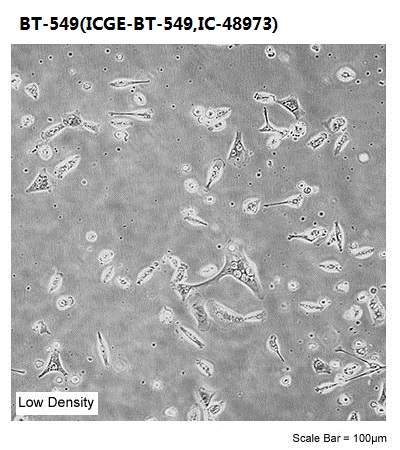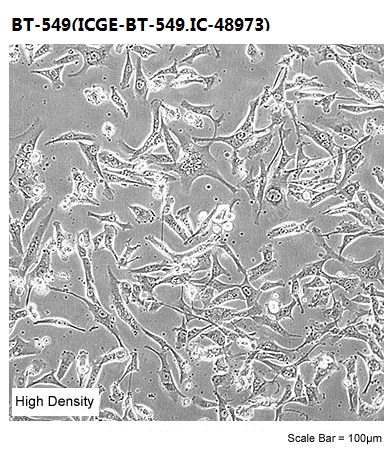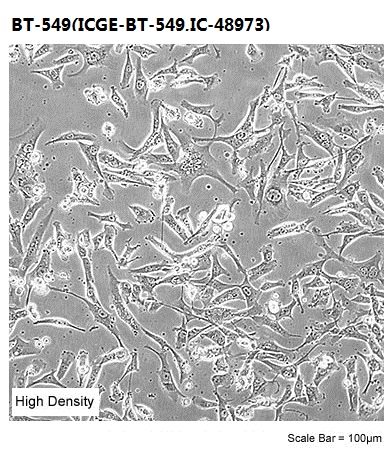


Overview
| Organism | Homo sapiens, human |
|---|---|
| Tissue |
mammary gland; breast
|
| Cell Type | Epithelial |
| Product Format | frozen |
| Morphology | epithelial |
| Culture Properties | adherent |
| Biosafety Level |
1
Biosafety classification is based on U.S. Public Health Service Guidelines, it is the responsibility of the customer to ensure that their facilities comply with biosafety regulations for their own country. |
| Disease | ductal carcinoma |
| Age | 72 years |
| Gender | female |
| Ethnicity | Caucasian |
| Applications |
This cell line is a suitable transfection host.
|
| Storage Conditions | liquid nitrogen vapor phase |
Properties
| Karyotype |
modal number = 78; range = 73 to 80. The cell line is aneuploid human female, with chromosome counts in the hypertriploid range. The X chromosomes are all abnormal. Normal chromosomes N10 and N13 are clearly under-represented, with chromosomes N2, N12, and N17 also tending to be. Chromosome N8 is over-represented with respect to the copy number of other normal chromosomes, and chromosomes N5 and N18 also usually have more copies than most chromosomes. Four marker chromosomes are found: iso(13q), 10q+, del(X)(q22:), del(11)(p11:). |
|---|---|
|
|
|
| Derivation |
The BT-549 line was isolated in 1978 by W.G. Coutinho and E.Y. Lasfargues. Source tissue consisted of a papillary, invasive ductal tumor which had metastasized to 3 of 7 regional lymph nodes.
|
| Clinical Data |
72 years
Caucasian
female
|
| Comments |
The established population is polymorphic with epithelial like components and multinucleated giant cells. A mucin-like material was secreted into the medium.
|
Background
| Complete Growth Medium |
The base medium for this cell line is ATCC-formulated RPMI-1640 Medium, Catalog No. 30-2001. To make the complete growth medium, add the following components to the base medium: 0.023 IU/ml insulin; fetal bovine serum to a final concentration of 10%. |
|---|---|
| Subculturing |
Volumes are given for a 75 cm2 flask. Increase or decrease the amount of dissociation medium needed proportionally for culture vessels of other sizes. Corning® T-75 flasks (catalog #430641) are recommended for subculturing this product.
Subcultivation Ratio: A subcultivation ratio of 1:2 to 1:6 is recommended
Medium Renewal: 2 to 3 times per week
|
| Cryopreservation |
Freeze medium: Complete growth medium supplemented with 5% (v/v) DMSO
Storage temperature: liquid nitrogen vapor phase
|
| Culture Conditions |
Atmosphere: air, 95%; carbon dioxide (CO2), 5%
Temperature: 37��C
|


